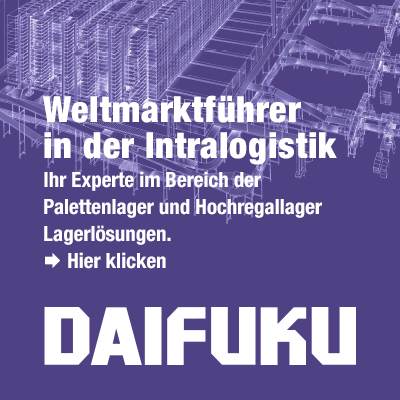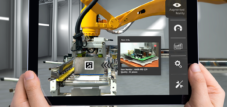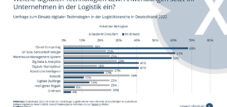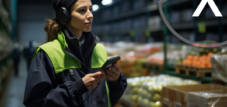Mixed case palletizing in modern logistics: Automation of mixed case picking in supermarket logistics
Language selection 📢
Published on: March 25, 2024 / update from: March 26, 2024 - Author: Konrad Wolfenstein
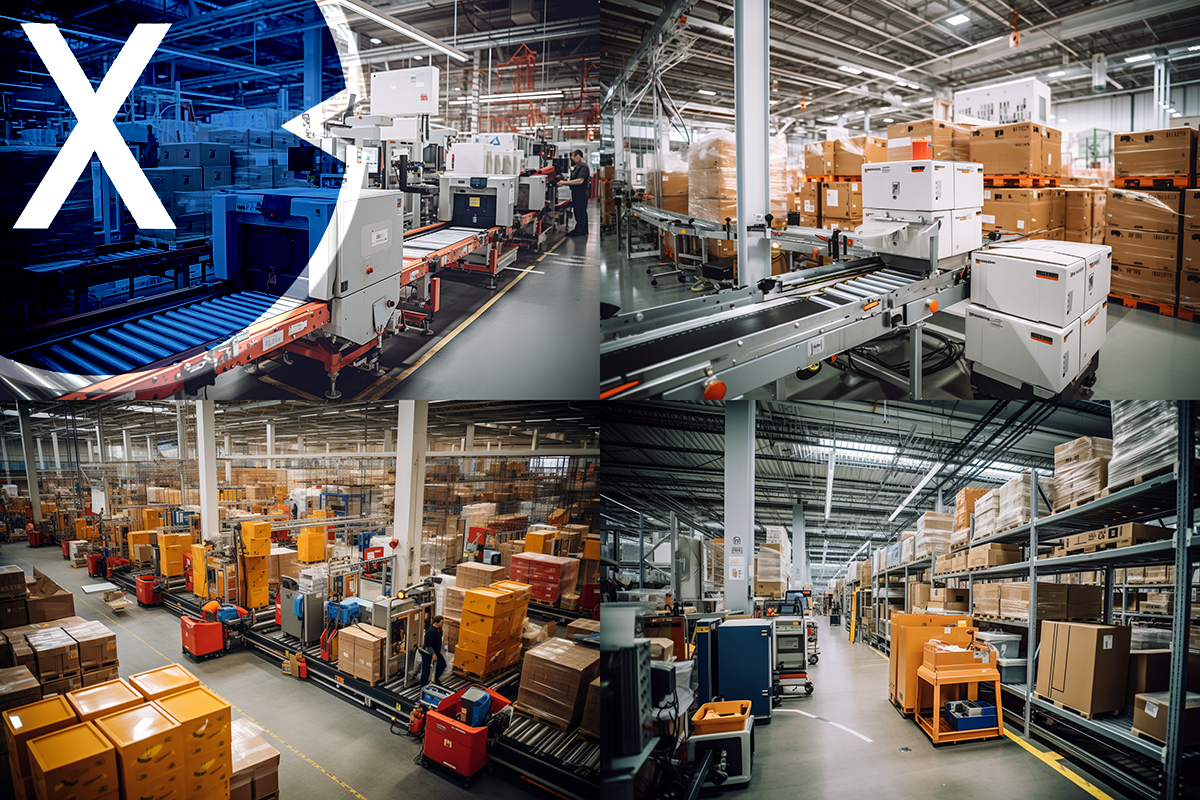
Intelligent logistics in use: The automation of mixed case palletizing in supermarket logistics – Image: Xpert.Digital
📦 In the dynamic world of supermarket logistics
🔍 Central role of mixed box picking
In the dynamic world of supermarket logistics, the precise and flexible provision of goods tailored to customer needs plays a central role in market success. The challenge is to meet the diverse and changing needs of each store, which can often be broken down to the level of individual boxes or even specific items. In modern logistics, mixed case picking, also known as mixed case palletizing, is becoming increasingly important in view of these requirements.
🤖 Advantages of automation
Mixed box picking describes the process in which items of different sizes, shapes and weights are automatically put together into a pallet, which is then transported to the respective destination. This form of product compilation is particularly widespread in retail and supermarket distribution, where a high diversity of products must be delivered to the individual branches.
The automation of these processes offers significant advantages over traditional, manual picking. At a time when labor is becoming increasingly scarce and labor costs are rising, automated mixed box picking allows for more efficient use of staff. Intelligent robots and sophisticated software algorithms take over the tasks that were previously handled by employees. These technologies are not only faster and more precise, but can also be operated around the clock without getting tired. Automation therefore leads to an increased throughput rate and at the same time reduces the error rate, which is an advantage that should not be underestimated, especially in busy times.
🚚 Optimization of loading space and environmental protection
Another significant advantage of mixed crate picking is the optimal use of truck loading space. Through software-supported planning, a pallet can be put together so that its loading profile – the arrangement and stability of the goods on the pallet – is the best possible in terms of size and weight. A well-thought-out loading profile prevents damage to the goods during transport and enables safe and efficient loading and unloading. This not only reduces transport costs, but also contributes to environmental protection by making fewer journeys necessary and thus reducing the CO2 footprint of transport.
🧠 Machine learning and artificial intelligence
The use of technologies such as machine learning and artificial intelligence plays a key role in designing efficient mixed box picking systems. By analyzing data and learning from past picking processes, the system can continuously improve its performance. This means that not only can current orders be processed efficiently, but that the systems are also able to anticipate future trends and changes in ordering behavior and adapt to them accordingly.
💡 Adaptability to market requirements
The adaptability of this technology is crucial as retail is subject to seasonal fluctuations and changing consumer trends. For example, demand for certain products may spike during holidays or special sales. With intelligent analysis and flexible adaptability, automated picking systems can react as needed and thus minimize inventory surpluses and out-of-stock situations.
🏗️ Implementation challenges
Despite the numerous benefits that automated mixed case picking brings, companies face challenges in implementing it. The introduction of such systems requires comprehensive planning, a careful analysis of the existing processes and, last but not least, a significant financial investment. In addition, it is important to adequately train employees and involve them in the transformation process to ease the transition to automated logistics and ensure high acceptance of the technology.
🔍 Scalability and future-proofing
Another important topic is the scalability of the systems. Companies must choose systems that not only meet their current needs, but are also flexible enough to keep pace with business growth and changing market demands. The modular structure and expandability of the automation systems are crucial criteria here.
✨ Efficiency and precision in supermarket logistics
Mixed box picking enables a new level of efficiency and precision in supermarket logistics. By reducing manual work processes, optimizing loading space and precision in order processing, companies position themselves significantly better in a highly competitive market. Advancing automation is not only a response to the current labor shortage and rising costs, but also a decisive step towards more sustainable and future-oriented logistics.
📣 Similar topics
- 🛒 The rise of mixed case picking in retail
- 🤖 How automation is revolutionizing supermarket logistics
- 📈 Optimization of supermarket distribution through intelligent software
- 💪 Personnel savings through automated logistics in retail
- 📦 Charging profile optimization: Environmental protection and cost reduction go hand in hand
- 🧠 Self-learning systems are driving the future of goods picking
- 🚀 Flexible adaptation to market trends through advanced analytics
- 🔧 Challenges in implementing picking systems
- 🔩 Scalability of automated logistics systems for sustainable growth
- 🌟 Sustainable logistics strategies as a competitive advantage
#️⃣ Hashtags: #Mixed box picking #Automated logistics #Supermarket logistics #Intelligent robots #Sustainable logistics
Xpert partner in warehouse planning and construction
📦🤖 Mixed Case Palletizing
🏭 Mixed Case Palletizing, or the automated assembly of mixed pallets, is an innovative process in the logistics industry that aims to efficiently combine different types of products on one pallet. This method is primarily used in industries where there is a large variety of products and rapidly changing distribution requirements. Supermarkets and retail stores particularly benefit from this technology due to their wide and diversified product offering.
🌐 Historical context
The origin of Mixed Case Palletizing lies in the need to increase the efficiency and speed of logistical processes. Conventional picking methods require employees to manually select and stack products, which is time-consuming and error-prone. With the advent of computer technology and automation, the development of solutions to simplify these processes began. Automated storage and picking systems were developed back in the late 1990s and early 2000s, but it wasn't until advances in robotics and artificial intelligence that mixed case palletizing experienced a revolution.
⚙️ Technological developments
Today, mixed case palletizing systems are able to not only sort and stack various items using algorithms and artificial intelligence, but also ensure that the pallets are optimally loaded. They take into account the size, weight and stability of the products in order to avoid damage during transport and at the same time make maximum use of storage and transport capacities.
📅 Chronology of deployment
Since when exactly has Mixed Case Palletizing been in use? The transition to automated systems has taken place gradually. Initially they were simple mechanisms that could take on specific tasks. However, with the integration of advanced software, sensor technology and machine learning over the past few decades, these systems have become increasingly intelligent and comprehensive. The breakthrough for mixed case palletizing came with the increased use of cobots (collaborating robots) and flexible automation technology in the 2010s.
🚀 Future prospects
The future prospects for mixed case palletizing are extremely promising. As robots and AI systems continue to improve, this technology will continue to grow in importance. Industry trends indicate that an increasing number of companies will move to automation to reduce costs, increase efficiency and minimize the risks associated with manual work. Advancing digitalization and the Internet of Things (IoT) are likely to expand the possibilities for mixed case palletizing, with real-time data analysis and connected systems enabling even more precise logistics.
🌿 Sustainability and ecological aspects
Another aspect of the future of mixed case palletizing is sustainability. Companies are increasingly striving to reduce their ecological footprint. Automated mixed pallets help to improve loading efficiency and thus reduce the number of necessary transports. This results in a reduction in fuel consumption and associated emissions, making Mixed Case Palletizing an environmentally friendly process.
🔧 Challenges and the job market
But despite the obvious benefits, the trend toward automation comes with challenges. The initial investment can be significant and not all products are equally suited to automated handling. In addition, the implementation of mixed case palletizing systems requires thorough planning of existing processes and structures in the company.
The world of work in particular is being transformed by increasing automation. On the one hand, there is a need for highly qualified specialists for programming, maintaining and monitoring automated systems. On the other hand, traditional manual picking jobs may disappear, leading to a need for retraining programs. Companies must take these social factors into account to maintain a balance between technological progress and social responsibility.
💡 Efficient handling of diverse products
Nonetheless, the long-term potential of Mixed Case Palletizing is enormous. By efficiently handling a variety of products, the supply chain can be optimized, resulting in better availability of goods and an improved purchasing experience. Supermarkets and other retailers can respond more agilely to market trends and customer needs. The constant development of AI and robotics will further strengthen the relevance of mixed case palletizing in the coming years and make it a central element in the logistics of the future.
Mixed case palletizing is a groundbreaking process in logistics, whose beginnings date back several decades, but which has developed rapidly, especially in the last decade. Given the constant technical innovations, the focus on sustainability and the strategic importance for companies in various industries, especially in retail, it is expected that mixed case palletizing will continue to gain in importance and significantly shape the future of logistics.
📣 Similar topics
- 🏗️ Automation in logistics: Mixed Case Palletizing
- 🛒 Advantages of Mixed Case Palletizing for Supermarkets and Retail
- 💡 Role of AI in revolutionizing logistics processes
- 🤖 Cobots and their importance for mixed case palletizing
- 🔍 Integration of sensor technology in the warehouse
- 🔄 The change in picking through mixed case palletizing
- 🌱 Sustainability and environmental benefits through automated palletizing
- 💼 The impact of automation on the labor market in the logistics sector
- 📈 The strategic importance of Mixed Case Palletizing for business processes
- 📊 Use of real-time data analysis in logistics
#️⃣ Hashtags: #AutomatizedLogistics #AIinTheLogistics #SustainablePaletting #CobotsInUse #MixedCasePalletizingZuZukunft
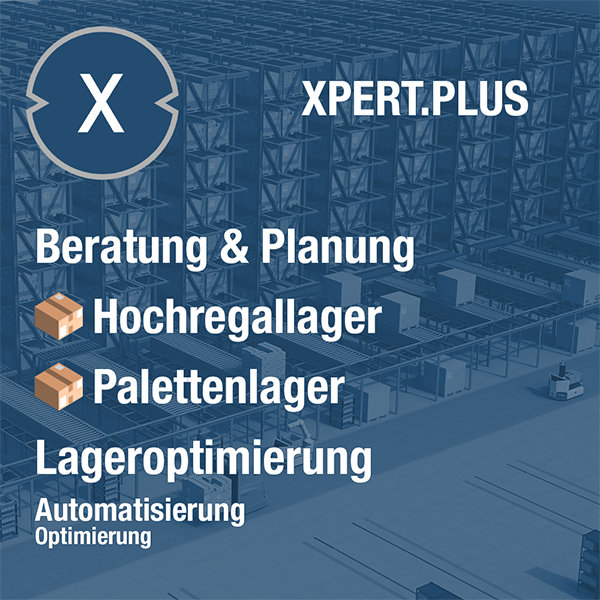
Xpert.Plus warehouse optimization - high-bay warehouses such as pallet warehouses consulting and planning
🤖📦 Mixed Case Palletizing: Revolution in the logistics industry 🏭
🔍 Basics of Mixed Case Palletizing
Mixed Case Palletizing, also the automated assembly of mixed pallets, is revolutionizing the logistics industry - especially in the world of supermarkets, where the variety of products and the rapid turnover of goods represent enormous challenges. The picking of different products on a single pallet - when it comes to delivering goods to supermarkets - is a logistical service that can be significantly optimized using modern technologies.
🏋️ Manual picking versus automation
Let's start with a look at the basics: At the heart of mixed case palletizing is the idea of arranging different items on a pallet like a mosaic. These items can have different sizes, weights and shapes and must be stacked so that they can be transported stably. The traditional approach, in which employees manually collect and stack goods according to orders, is time- and labor-intensive and prone to errors.
🤖 Technological advances and their application
Today, this process is increasingly automated through the use of advanced software and robotics. Robot arms, equipped with intelligent gripping systems and supported by powerful sensors, can grip and place items precisely. Such gripping systems are often equipped with machine learning functions that allow the machines to improve through experience and adapt to different product types.
📦 Warehouse management and data analysis
But technology alone is only part of the equation. In order to effectively convert the processes, the processes in a warehouse must first be understood. Goods arrive in a variety of shapes and sizes, some in boxes, others in bottles or loose. They need to be stored, managed and ultimately prepared for shipping. The key to an efficient mixed case palletizing solution is a sophisticated warehouse management system (WMS) that allows warehouse employees to keep track of everything while giving robots precise instructions on how and where to place each item.
📈 Use of big data
Another element that contributes to efficiency is data analysis. Large amounts of data about inventory levels, sales figures and shipping details are constantly flowing into the system. This so-called big data can be used to recognize patterns, create forecasts and ultimately optimize inventory and replenishment. By analyzing the products passing through, peak times can be anticipated, for example, and personnel planning, but also the use of equipment, can be made more efficient.
✅ Advantages and increased efficiency through automation
Specifically, the advantages of automated mixing pallets can be summarized as follows:
1. Increased efficiency
The faster order picking process drastically reduces the overall processing time of an order. Goods that are picked quickly reach the sales floor or directly to the customer more quickly.
2. Reduction of labor costs
Automation means less manual labor is needed for monotonous and physically demanding tasks. This leads to a reduction in labor costs and at the same time can also contribute to employee satisfaction by allowing employees to concentrate on more demanding and ergonomically safer tasks.
3. Reducing the risk of errors
Human error when picking and stacking goods can lead to incorrect deliveries, damage and ultimately dissatisfaction among recipients. Robots, on the other hand, work with a precision that significantly minimizes the risk of errors.
4. Increased security
Heavy lifting work and the risk of accidents caused by pallets falling over are greatly reduced by automation.
5. Scalability
Automated systems can more easily adapt to increasing order volumes. They are scalable and can grow with the company without having to proportionally increase the workforce.
⚠️ Challenges of automation
Now you might think that automation is a panacea. But there are challenges here too. One is the initial investment, which can be daunting for small and medium-sized businesses. In addition, the implementation of automation solutions necessarily requires a rethink and often a restructuring of existing processes.
🧑🔧 The human factor and labor market adjustments
There is also another dimension that needs to be taken into account: the human factor. Increasing automation is leading to changes in job profiles. While fewer people are needed for the physically demanding tasks, the demand for skilled workers who can operate, maintain and optimize the complex systems is increasing. This creates a need for retraining and further education for existing staff in order to keep up with new technology.
🔄 Standardization and hybrid solutions
Another problem is standardization. Not all products can be easily handled automatically - the technology still has its limits, particularly when it comes to fresh or irregularly shaped foods. Hybrid solutions must be found here that offer a combination of human flexibility and robotic efficiency.
🚀 The future of automated logistics
Despite these challenges, it is clear that the transition to automated mixed case palletizing systems is unstoppable. They represent a milestone in the evolution of the logistics industry and offer enormous potential for increasing efficiency and productivity. This technology will play a key role, especially in the world of supermarkets, where product diversity and the need for fast delivery cycles are particularly pronounced.
🔄 Automation of supermarket logistics
Mixed case palletizing is changing supermarket logistics sustainably through automation. The technology not only increases efficiency and accuracy, but also contributes to better ergonomics in the workplace. It enables supermarkets and other retailers to keep up with consumers' growing expectations for rapid availability of an ever-broader range of products. However, the transformation to automated logistics must be carefully managed in order to balance both economic and social aspects and to be successful in the long term. The future of supermarket logistics lies in intelligent human-machine integration that enables a smooth and agile supply chain, meeting both consumer needs and sustainable business practices.
📣 Similar topics
- 🛒 Revolution in supermarket logistics: Mixed Case Palletizing
- 🤖 Robotic arms and intelligent gripping systems in use
- 📦 Optimization of goods picking through automation
- 📊 Big data and data analysis: fuel of logistics efficiency
- 💡 Advantages of automated mixing pallets in supermarkets
- 🛠️ Challenges when implementing automation solutions
- 🤹♂️ The human factor in automated logistics
- 🍏 Handling of fresh produce: Limits of automated systems
- 🚀 The unstoppable evolution of logistics towards mixed case palletizing
- 🌟 The future of supermarket logistics: human-machine integration
#️⃣ Hashtags: #MixedCasePalletizing #SupermarketLogistics #Automation #WarehouseManagementSystem #LogisticsRevolution
We are there for you - advice - planning - implementation - project management
☑️ Smart City & Factory: Industry expert for energetic 5G buildings and halls as well as advice and installation of solar systems
☑️ Xpert.Plus - logistics consulting and logistics optimization
☑️ Industry expert, here with his own Xpert.Digital Industry Hub with over 2,500 specialist articles
I would be happy to serve as your personal advisor.
You can contact me by filling out the contact form below or simply call me on +49 89 89 674 804 (Munich) .
I'm looking forward to our joint project.
Xpert.Digital - Konrad Wolfenstein
Xpert.Digital is a hub for industry with a focus on digitalization, mechanical engineering, logistics/intralogistics and photovoltaics.
With our 360° business development solution, we support well-known companies from new business to after sales.
Market intelligence, smarketing, marketing automation, content development, PR, mail campaigns, personalized social media and lead nurturing are part of our digital tools.
You can find out more at: www.xpert.digital - www.xpert.solar - www.xpert.plus



